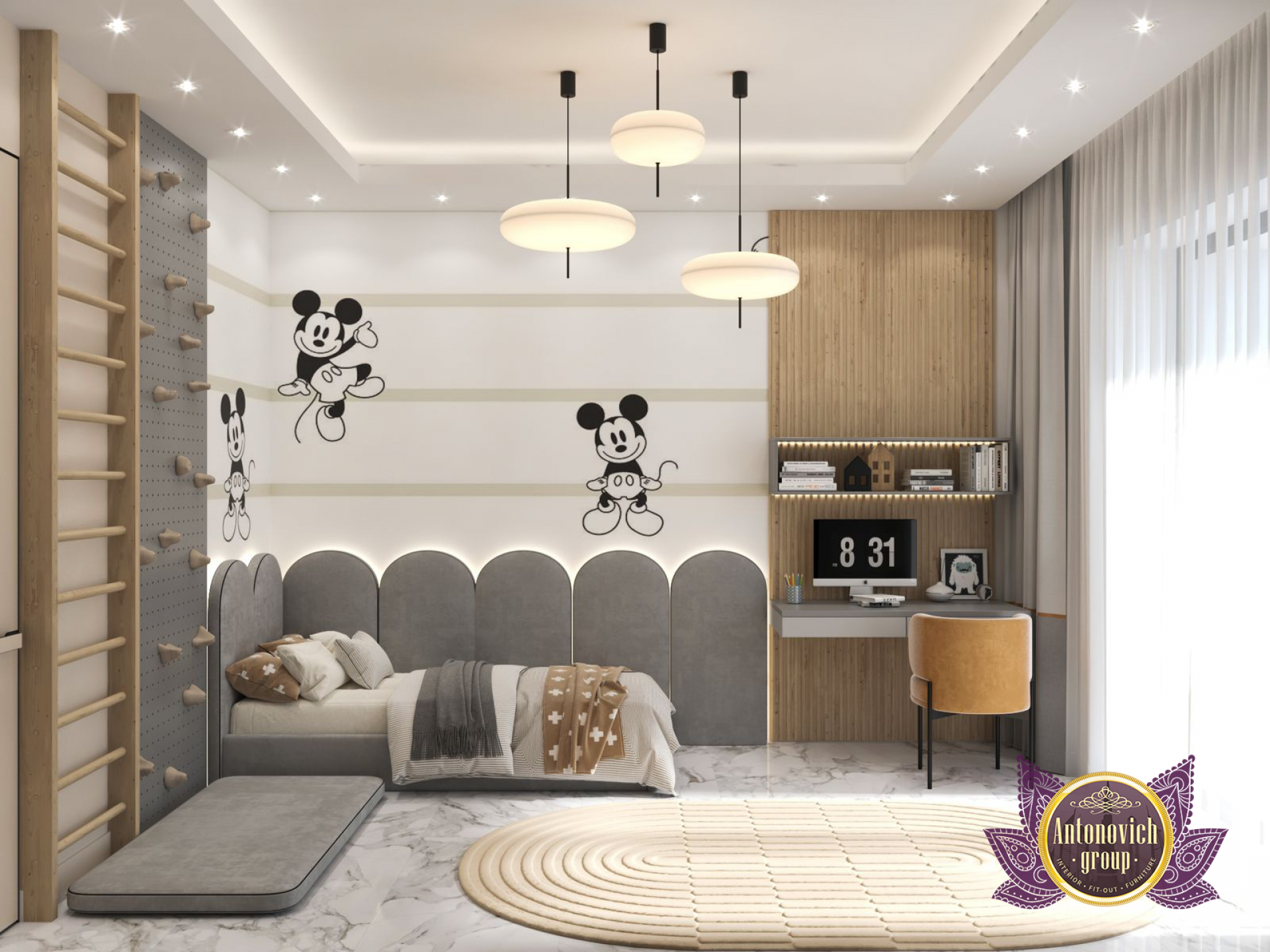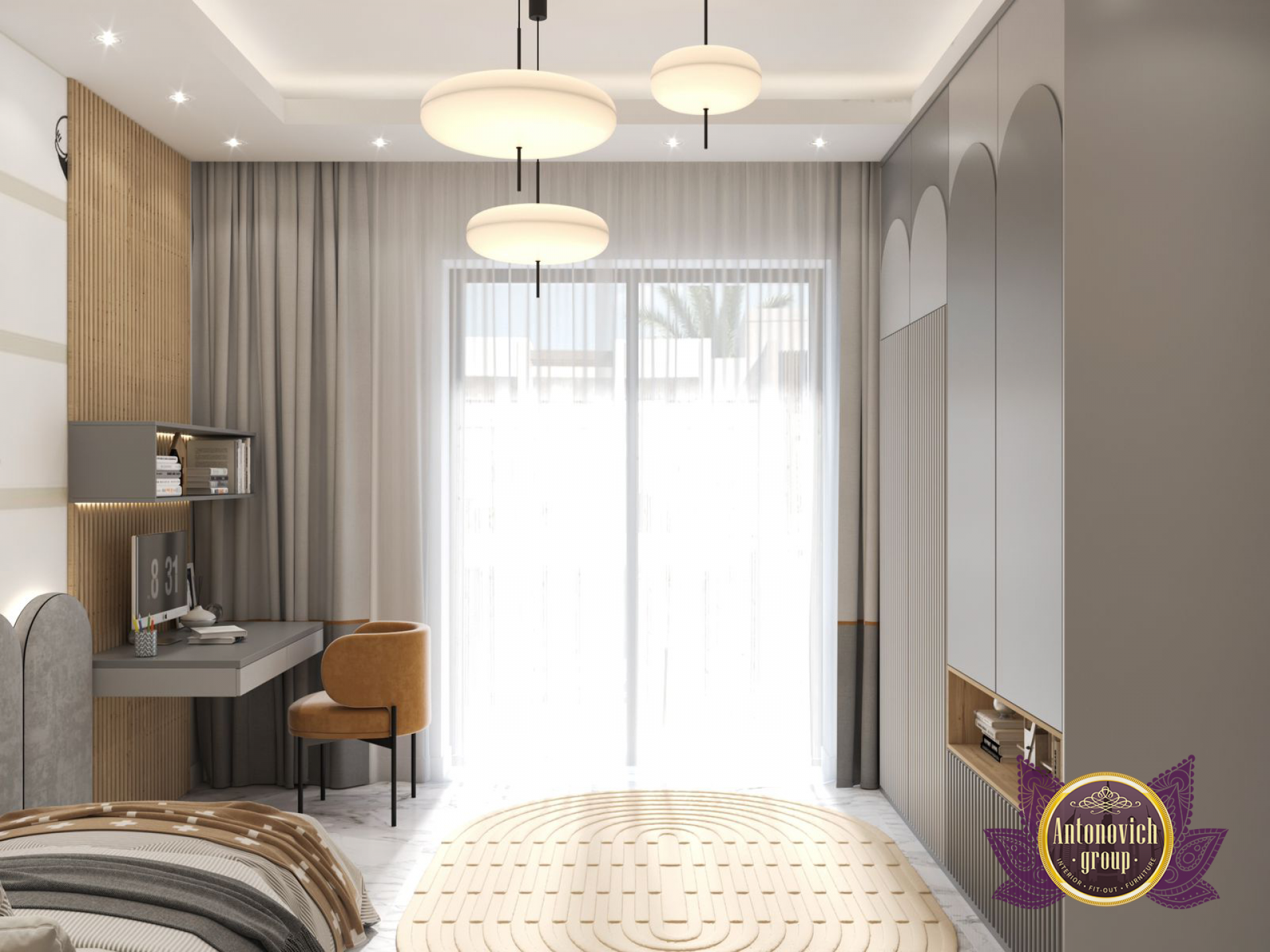YOUR KID DESERVES THE BEST ROOM!
When designing a kid's bedroom, it's important to strike a balance between functionality and aesthetics. The space should be designed in a way that encourages play, creativity, and a sense of comfort, while also being practical and easy to maintain. Here are some ideas for designing a kid's bedroom interior. When it comes to choosing a color scheme for a kid's bedroom, the options are endless. You can go for bright and bold colors that are fun and stimulating or soft, muted hues that create a relaxing ambiance. For younger children, primary colors like red, blue, and yellow are popular choices, while older kids may prefer more sophisticated shades like pastel pink, mint green, or navy blue. Lighting plays a crucial role in creating the right atmosphere in a kid's bedroom. While natural light is always preferable, you may need to supplement it with artificial light sources. Ceiling fixtures, table lamps, and floor lamps can all be used to create a warm and inviting glow. Nightlights can be a great addition to help younger children feel safe and secure in their rooms.

When it comes to choosing furniture for a kid's bedroom, consider the age and needs of the child. A younger child may need a crib, a changing table, and a dresser, while an older child may need a bed, a desk, and bookshelves. Make sure the furniture is sturdy, safe, and functional. Storage is also important, as kids tend to accumulate a lot of stuff. Consider adding a toy chest, bookshelves, or storage bins to keep things organized. The bedding is an essential part of a bedroom interior for kids. The bedding should be comfortable, durable, and easy to clean. Depending on the age of the child, you may want to consider themed bedding or bedding with their favorite characters. For younger children, crib bedding should be soft, hypoallergenic, and breathable. The walls of a kid's bedroom are a blank canvas waiting to be filled with creativity and imagination. Wall decals, murals, and posters are great options for adding visual interest to the space. You can also display your child's artwork, family photos, or inspirational quotes. Consider using a chalkboard or whiteboard to encourage creativity and learning. When it comes to flooring, choose a material that is easy to clean and durable. Hardwood, laminate, or vinyl flooring are all great options. If you prefer carpet, choose a low-pile carpet that is easy to clean and won't trap dust and allergens. A colorful rug can be a fun addition to the room.

Window treatments serve both practical and decorative purposes. They can help regulate the amount of light and heat entering the room and add a decorative touch to the space. Choose curtains, blinds, or shades that match the color scheme of the room and are easy to operate. Blackout curtains can be a great addition to help younger children get a good night's sleep. Accessories are the finishing touch that can take a kid's bedroom from ordinary to extraordinary. Consider adding throw pillows, stuffed animals, wall art, and decorative accents that reflect your child's personality and interests. A bean bag chair or a reading nook can be a great addition for older kids who love to read or relax. Safety should always be a top priority when designing a kid's bedroom. Make sure all furniture is anchored to the wall to prevent tipping. Cover electrical outlets and keep cords out of reach. Choose window treatments with the cordless operation to prevent strangulation hazards. Use non-toxic paint and avoid using chemicals in the room.












